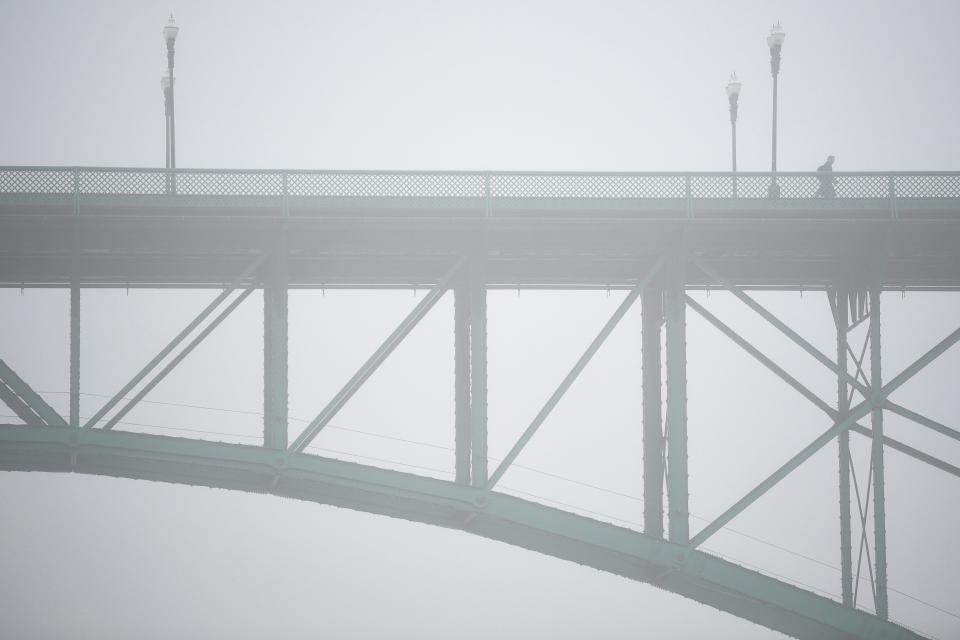Gay Street Bridge construction used 4 million pounds of steel | Opinion
The opening of the new steel and concrete Gay Street Bridge across the Tennessee River on July 6, 1898, had required a lot of materials, many workers and tireless efforts to raise funds to build it. And even after its completion, there was controversy. The superintendent of the concrete work was Peter Carlsen, a Swede who had worked on important structures in Sweden, Norway and other European countries. He had the reputation of being one of the best concrete workers in America.
The Knoxville Journal of Jan. 16, 1897, in heralding the funding for the bridge, said, "Money Is Here: Knox County Bridge funds floated at last. The money was deposited with the New York bank yesterday and President Branner of the Third National Bank of this city received a telegram announcing that the $223,000 had been placed to the credit of his bank.

"Knox County Judge G.L. Maloney was advised of the transaction and he at once drew checks to liquidate the estimates that have already been passed and ordered by the Bridge Commission. The bridge company will put an increased force on the bridge work and it will now be rushed to completion." The five national banks in the city received equal amounts of the money.
Before construction got underway, 36 railroad cars of steel had arrived at the Southern Railway yards. A hoisting engine had been placed on the south side of the river. There was a rail car of ropes, cables and tackle blocks. The steel amounted to 4 million pounds. It was shipped from the Youngstown Mills in Ohio.
D.L. King & Son had the contract for unloading and hauling the steel to the bridge site. They delivered one-third to the south side and one-third to the north end, and the remainder was put on a barge in the river. The pile of steel on the south side covered several acres. Half of Gay Street from Main to Hill as well as vacant lots in that vicinity were piled high with steel.
Hear more Tennessee voices: Get the weekly opinion newsletter for insightful and thought-provoking columns.
Just before the formal opening of the bridge, the Journal and Tribune reported what was perhaps the first recorded suicide from the Gay Street Bridge when a pedestrian, Gaines Emmert, said a man was walking behind him on the bridge when he heard a splash below. "Last night it was reported that the body of a man had been found near the Government Fleet, which is stationed a hundred yards below the bridge." The paper said it could not confirm the report.
The opening of the bridge was celebrated with a large banquet at the McCallie Dining Room on Wall Avenue. The affair was attended by Knox County Court members and friends. The speakers included Judge Maloney, Knoxville Mayor William Rule and former Mayor Samuel Heiskell. It was revealed that the bridge cost the county $211,055.61, $455.61 more than the contract price.
Some county squires thought the county should not pay $4,405.38 for the steel that was not used. They disagreed about paying for other charges. In the final vote to accept the bridge, 25 were in favor and 19 were opposed. With even more divided opinion, a resolution was passed to hire a night watchman and custodian for the bridge. He would keep it clean and have general supervision of it.
Robert J. Booker is a freelance writer and former executive director of the Beck Cultural Exchange Center. He may be reached at 865-546-1576.
This article originally appeared on Knoxville News Sentinel: Opinion: Gay Street Bridge construction used 4 million pounds of steel

